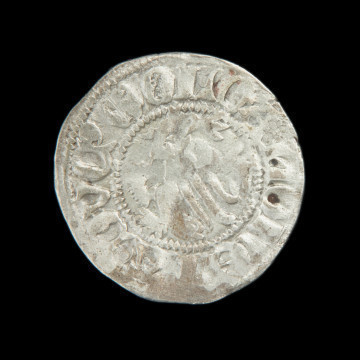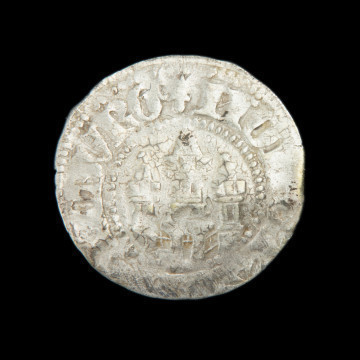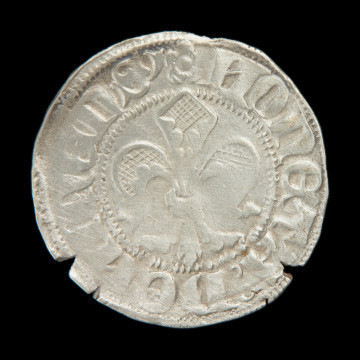
Witten
1405 — 1449
National Museum in Szczecin
Part of the collection: Szczecin treasure from Podzamcze
At the end of the 14th century, new coins were introduced into circulation in West Pomerania, i.e., wittens. They quite quickly became a popular means of payment in the Baltic Sea basin. These coins were first introduced to the market by Lübeck in 1365, which established a unit with a denomination higher than a denar for the Hanseatic League. Wittens, worth 4 denars, weighed 1.3 g and were made of high-quality silver. They were minted in Pomerania until 1763. In 1999, during archaeological works in Szczecin's Podzamcze district, wittens and other Pomeranian silver coins were discovered in a metal vessel hidden under the floor of one of the houses at Targ Rybny (Fish Market). Among them, there was a copy, which was minted during the reign of two dukes of Wallachia from the Pomeranian Griffin dynasty: duke Warcisław IX (?-1457) and Barnim VII (1403-?), who from 1425 co-ruled in the Duchy of Wolgast, a part of the Pomeranian Duchy. After his brother's death, Duke Warcisław became the sole ruler of the united duchy. He became famous for initiating the establishment of the University of Greifswald, one of the oldest universities in Europe. The witten from the Podzamcze treasury was minted in Rostock, which in the 15th century was one of the richest centres of the Hanseatic League and one of the most important seaports on the Baltic. In 1381, Rostock concluded a monetary agreement with other centres of the Hanseatic League. As a result, the minting of wittens began.
Małgorzata Peszko
Dimensions
cały obiekt: diameter: 1,9 cm
Object type
coin
Creation time / dating
Creation / finding place
Identification number
Location / status

1405 — 1449
National Museum in Szczecin

1370
National Museum in Szczecin

XV wiek
National Museum in Szczecin
DISCOVER this TOPIC
National Museum in Szczecin
DISCOVER this PATH
Educational path